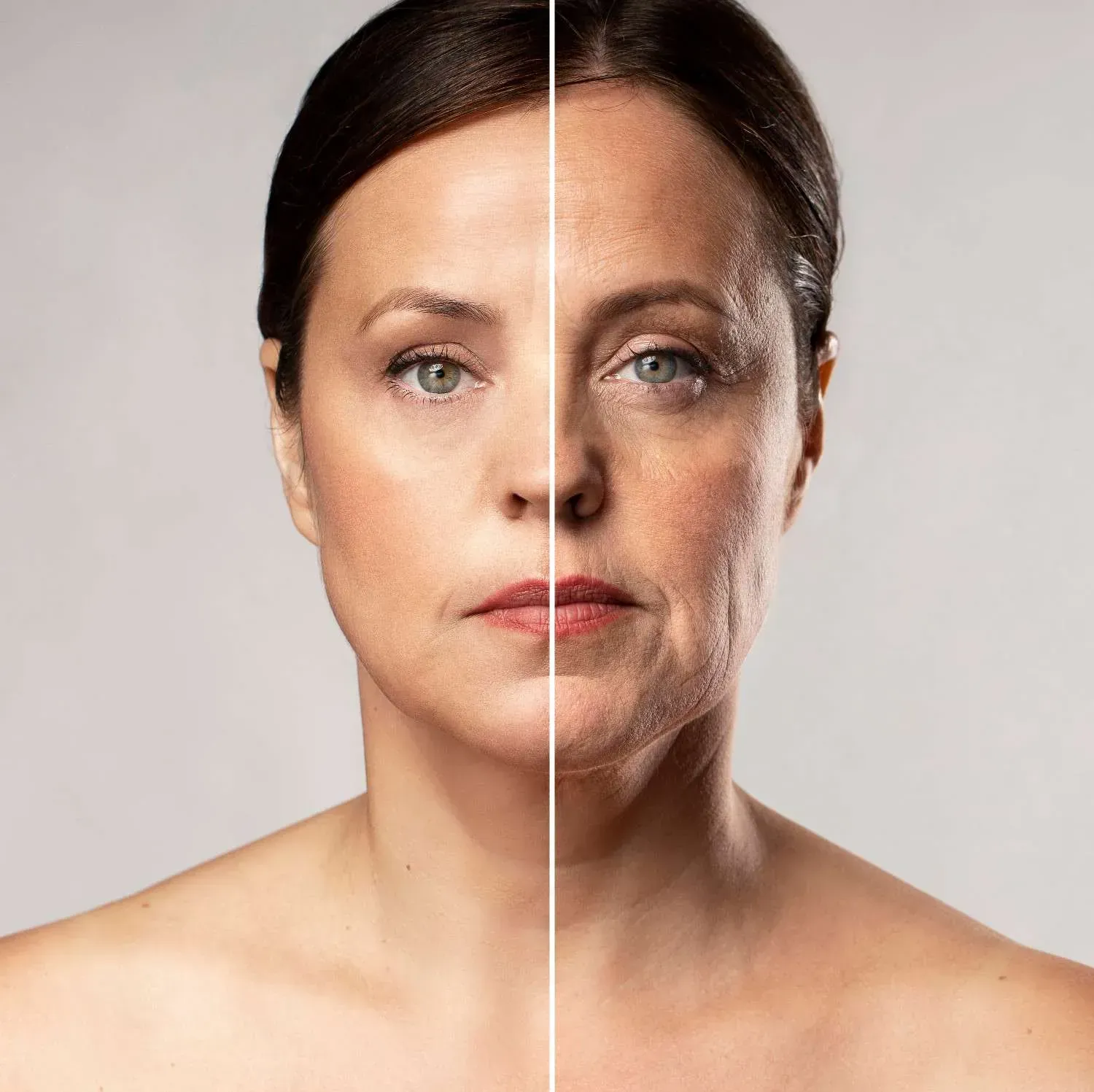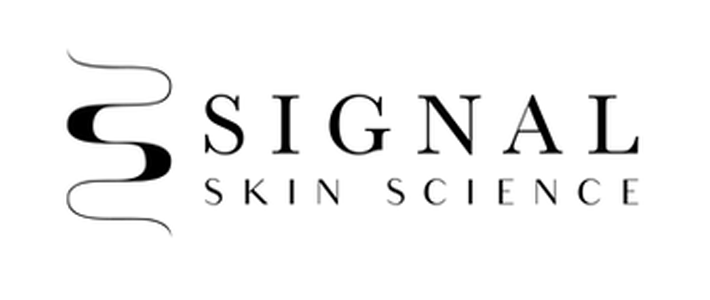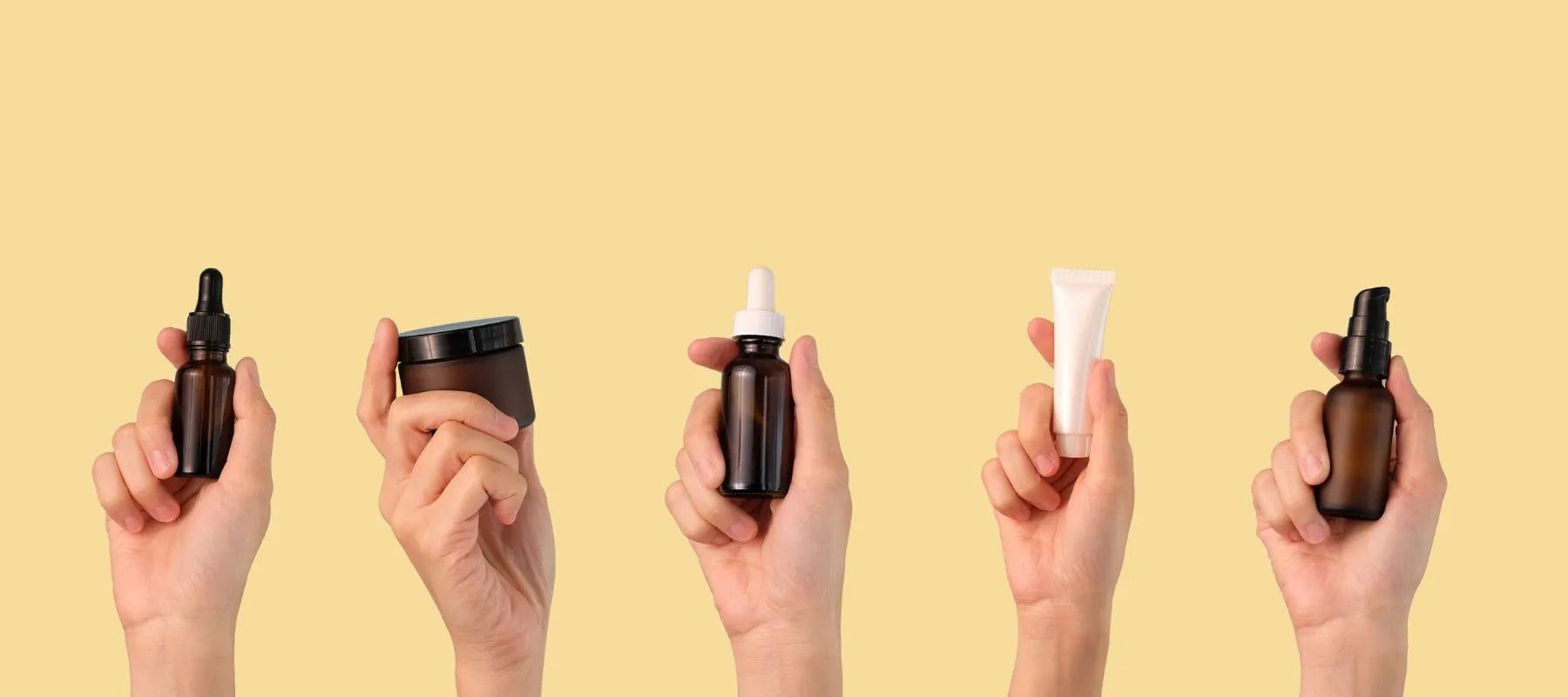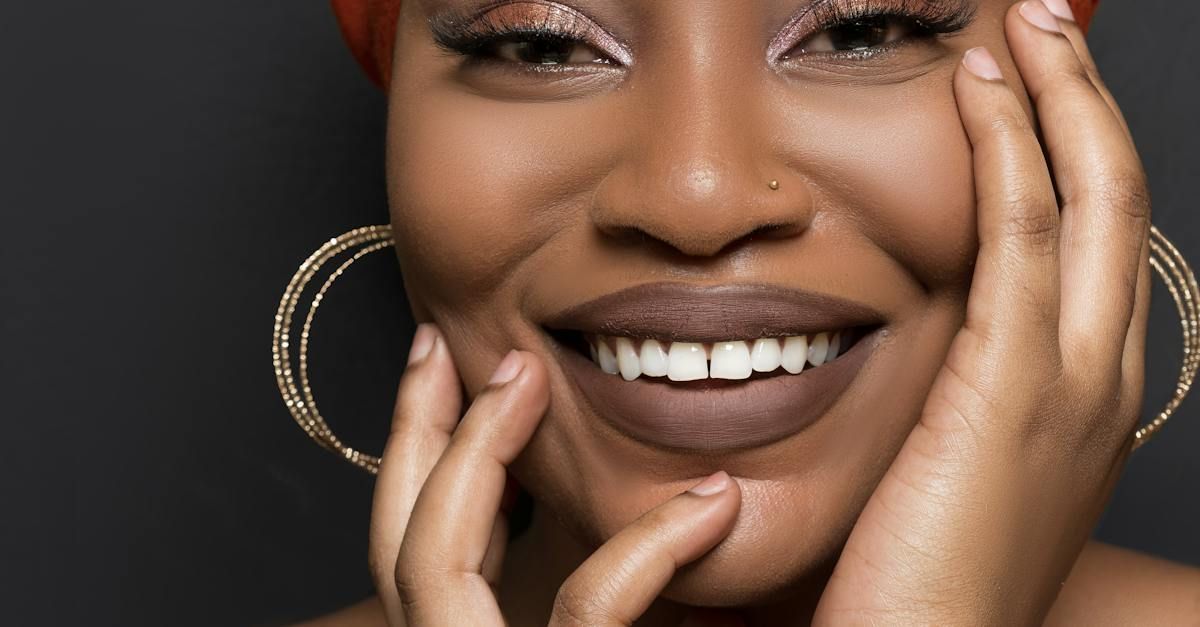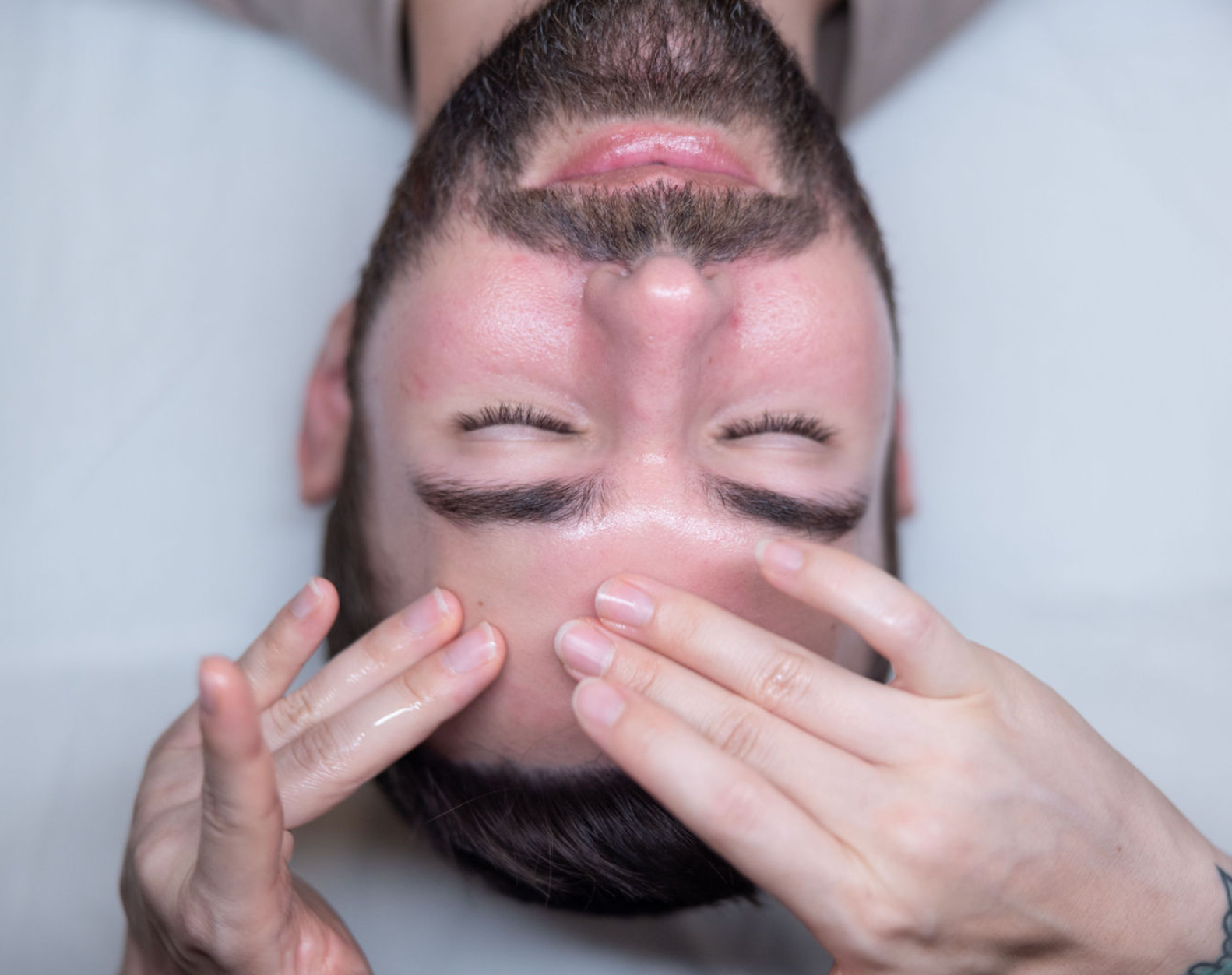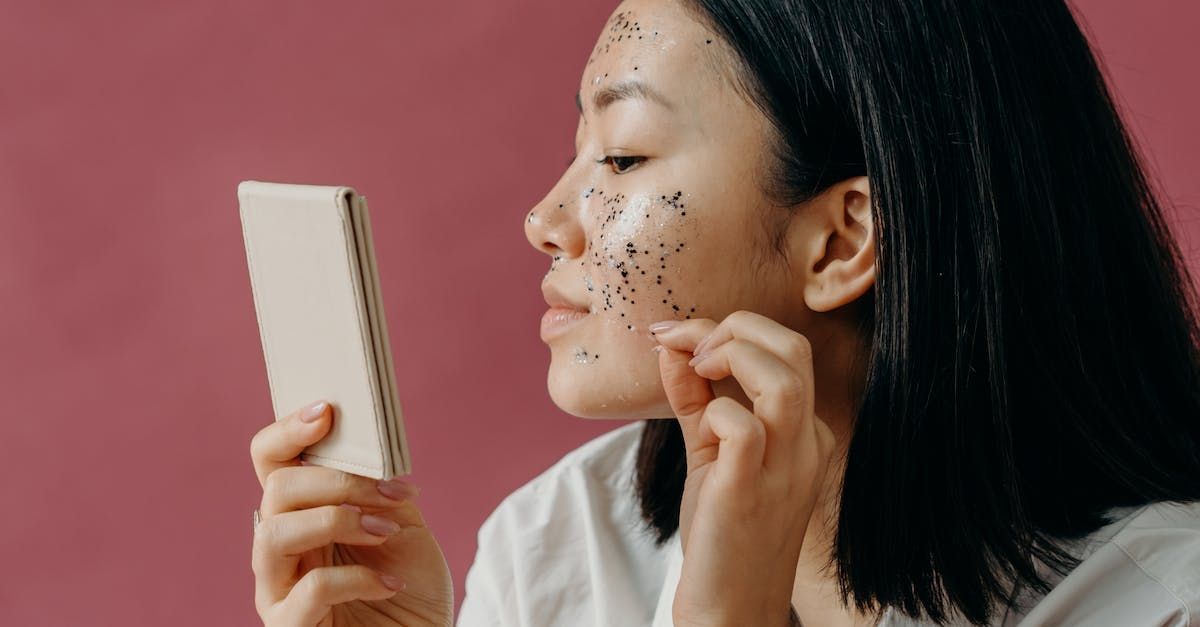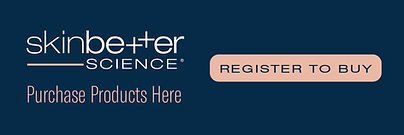Science Behind Facial Massage: How It Works & Benefits
Yes, facial massage really works! The science shows that gentle pressure and specific movements can boost blood flow, help your lymphatic system drain toxins, and even help your skin make more collagen - the protein that keeps skin smooth and firm.
This article will show you exactly how facial massage works in your body, what the research says about its benefits, and the best techniques to try at home. You'll learn why this ancient practice is backed by modern science and how to use it for healthier, glowing skin.
How Your Skin Responds to Touch
Your face has an amazing network of tiny blood vessels and lymph channels just under the skin. When you massage your face, you're working with systems that have been helping your body stay healthy for millions of years.
The Body's Built-In Drainage System
Your lymphatic system works like a drainage network throughout your body. It collects extra fluid from your tissues and carries it back to your bloodstream. According to the Cleveland Clinic , this network of organs, vessels and tissues moves colorless lymph fluid back into your circulatory system as a vital part of your immune system. Your face has many important lymph nodes - small bean-shaped filters that clean this fluid as it moves through.
In your skin, lymphatic and blood vessels work together to supply oxygen and nutrients through a system just below the top layer of skin. When this system works well, your skin looks bright and healthy. When it gets slow or blocked, you might notice puffiness, dullness, or even breakouts.
Blood Flow and Skin Health
Think of your skin like a garden that needs water and food to grow. Facial massage helps blood vessels open up, bringing more oxygen and nutrients to skin cells. This better blood flow helps your skin repair itself and make new, healthy cells.
Scientists have found that this improved circulation does more than just make you feel good. The extra blood flow also helps your skin make collagen, which keeps skin firm and prevents wrinkles.
What Research Shows About Facial Massage
The evidence for facial massage keeps getting stronger. Let's look at what scientists have discovered about how it really works.
Blood Circulation Studies
A 2017 laboratory study found that skin massage increased important proteins like decorin, fibrillin, tropoelastin, and procollagen-1 in the skin. These substances give skin its structure and stretch. The National Center for Biotechnology Information published research showing that massage at specific frequencies increased collagen IV and other structural proteins in skin tissue. The same study tested massage on 20 women aged 65-75 and found visible improvements.
Modern Imaging Proves the Effects
Recent studies using high-tech CT scans have given us the clearest picture yet of what facial massage does. A 2021 pilot study suggests that facial massage might offer the appearance of lifting in the cheeks. Using CT scans, researchers concluded that massage could help improve facial mobility, potentially making the skin look younger or more lifted.
Even more impressive, a 2022 study by some of the same authors used CT scanning on five volunteers who massaged their cheeks for 2 weeks. Researchers found that massage thinned the skin, helped lift the skin, and subjectively improved the skin's appearance.
The Lymphatic Connection
Studies show that manual lymphatic drainage can increase peripheral arterial blood flow through skin circulation. One study using a mouse model demonstrated increased blood flow as a result of massage. This means massage doesn't just move lymph - it also helps blood flow better.
Research spanning 30 years found that manual lymphatic drainage helps with symptoms beyond just swelling, including fatigue and pain tolerance. The American Massage Therapy Association reports that studies suggest manual lymphatic drainage can be used in symptomatic treatment of various diseases, like multiple sclerosis and Parkinson's disease. For your face, this means massage can help you feel more relaxed while improving your skin.
The Science of Different Massage Techniques
Not all facial massage is the same. Different techniques work on different parts of your skin's support system.
Effleurage: The Foundation Technique
Effleurage involves gentle, sweeping strokes across the skin's surface and is a foundational facial massage technique. This method warms up your skin and helps products absorb better. It's like gently waking up your circulation.
The science behind effleurage is simple but powerful. These light, circular stroking movements with palms or fingertips warm up the skin and enhance blood flow. It's the perfect way to start any facial massage routine.
Petrissage: Deep Tissue Benefits
Petrissage involves kneading and lifting movements that target deeper layers of muscle tissue to release tension and promote circulation. This technique works on the muscles under your skin, helping them relax and improve their tone.
Compression on the skin through kneading, squeezing and pinching affects the deeper muscle tissue of the face and helps blood pump to the surface of the skin. This is why your face might look flushed after a good massage - it's a sign that circulation is working.
Lymphatic Drainage: The Detox Method
Lymphatic drainage massage uses gentle, sweeping motions with fingertips or palms to encourage the flow of lymphatic fluids toward the lymph nodes, starting at the center of the face and working outward. This technique is especially good for reducing puffiness.
The key is working with your body's natural drainage patterns. For maximum lymphatic drainage benefits, the massage should be performed in the direction of lymphatic flow, which is a down and out direction. This might feel different from what you'd expect, but it works with your body's design.
How Massage Affects Collagen Production
One of the most exciting discoveries about facial massage is how it affects collagen - the protein that keeps skin smooth and firm.
The Collagen Connection
Collagen helps reduce wrinkles and keeps skin plump and wrinkle-free. Facial massage helps ensure continuous collagen production. But how does simple touch create such powerful changes?
Scientists found that mechanical stress from massage can alter many biologically active molecules including collagen and elastin. At the tissue level, organs respond to mechanical stress by changing their structure. Your skin literally rebuilds itself in response to gentle, regular massage.
Frequency Matters
Research shows that the frequency of mechanical stress is fundamental for stimulating skin cells, particularly for fibroblasts - the cells that make collagen. Studies found that massage at specific frequencies (around 75Hz) showed the best results for increasing collagen and related proteins.
While you can't achieve these exact frequencies with hand massage, the principle still applies: regular, consistent massage gives better results than occasional sessions.
What About Fascia?
Some trendy techniques focus on massaging facial fascia - the thin layer of tissue that covers muscles. However, research suggests that fascial massaging might actually break down collagen structure while stretching it, potentially contributing to wrinkling rather than reducing it.
The good news? Traditional gentle massage techniques that work with your skin's natural systems are still the safest and most effective approach.
Stress Reduction and Skin Health
The benefits of facial massage go beyond just the physical effects on your skin. The mental health benefits are scientifically proven too.
The Stress-Skin Connection
Scientifically, stress releases cortisol, a hormone that can negatively affect your skin's health. Facial massage induces relaxation and reduces stress levels. Lower cortisol levels translate to fewer breakouts, less redness, and overall skin improvement.
Studies have suggested that facial massage has strong effects on stress alleviation and psychological relaxation. According to Harvard Health Publishing , massage therapy can reduce cortisol levels and activate the parasympathetic nervous system, which promotes healing and relaxation. When you're less stressed, your skin can focus on repair and renewal instead of fighting inflammation.
The Relaxation Response
Facial massage can positively impact the sympathetic nervous system, which regulates automatic bodily functions, thus lowering blood pressure, reducing cortisol, and promoting the release of feel-good hormones. This creates a positive cycle where relaxation leads to better skin health.
The soft strokes and pressure applied to key facial points alleviate tension in muscles often strained by daily stressors or prolonged screen time. In our digital age, this tension relief is more important than ever.
Practical Applications and Techniques
Now that you understand the science, let's talk about how to put it into practice safely and effectively.
Basic At-Home Technique
Start with clean fingers and gently rub the face in circular motions starting with the central face and moving outwards. Always use a facial oil or serum to help your fingers glide smoothly and avoid pulling the skin.
The timing matters too. The best time to do a facial massage is during your skincare routine. This way, you're helping your products absorb better while giving your skin the massage benefits.
Pressure and Direction Guidelines
Lymphatic massage should not be painful. The fingers should stroke the skin very lightly. Think of it as gentle guidance rather than deep pressure. Your lymphatic system responds better to light, consistent movement than to heavy pressure.
For tension relief, use upward and outward motions. For lymphatic drainage, go downward on the neck to help with drainage. You can combine both approaches in one session for maximum benefits.
Tools vs. Hands
While trendy beauty tools can provide a luxurious experience, our hands are the most effective facial tools already available at home. Your hands can adjust pressure and direction instantly based on what your skin needs.
However, some tools can be helpful additions. Gua sha stones and jade rollers can provide different sensations and may help with lymphatic drainage when used correctly.
Professional vs. At-Home Massage
Understanding when to do it yourself and when to see a professional can help you get the best results.
When to See a Professional
Professional facial massage services can provide techniques that are difficult to do on yourself. Advanced techniques like buccal massage work within the mouth to provide relief for TMJ and jaw tension, jowling, and more.
Professional estheticians also understand how to combine massage with other treatments. Treatments like gua sha facials use specific movements to release fascia, firm and hydrate skin, and reduce under-eye puffiness.
Benefits of Regular Professional Treatment
A certified expert explains that becoming certified in lymphatic drainage massage for the face and neck is challenging, and professionals can achieve results that are difficult to replicate at home. Professional massage therapists understand anatomy and can target specific areas more effectively.
Experts recommend starting with two treatments per week, three days apart, with frequency regulated according to your skin's adaptation to the practice. A professional can help you determine the right schedule for your skin.
Home Care Maintenance
Even if you see a professional, daily home care enhances the benefits. One expert's favorite benefit was dependency and use of less product - you're able to rely on your body for the vitality of your skin.
Simple daily techniques can maintain the benefits between professional sessions and help you understand what your skin needs.
Safety Considerations and Best Practices
While facial massage is generally very safe, there are important guidelines to follow.
Who Should Be Careful
Talk to your doctor first if you have health concerns—especially conditions such as congestive heart failure, blood clots, kidney problems, infections, or circulation problems. These conditions can affect how your lymphatic system works.
The Mayo Clinic notes that you should avoid lymphatic massage if you have blood clots, cellulitis, deep vein thrombosis, heart disease, or kidney failure. When in doubt, check with your healthcare provider first.
Common Mistakes to Avoid
Using too much pressure or friction can cause micro-tears in the skin. Aggressive massage may also irritate injured or inflamed muscles. Remember, more pressure doesn't mean better results.
Using skin products along with facial massage may cause irritation, especially with strong actives like retinoids or chemical exfoliants. If you use active skincare ingredients, do your massage on different days or use a gentle oil instead.
Proper Preparation
Before starting a facial massage, clean the skin thoroughly to eliminate dirt, oil, and impurities that may hinder effectiveness. Clean hands are just as important as clean skin.
Since lymphatic drainage massage acts on the skin, it's important to avoid using oils or lotions during lymphatic-focused massage. However, for general facial massage, a light oil helps prevent skin pulling.
The Future of Facial Massage Science
Research into facial massage continues to grow, giving us new insights into how touch affects our skin and health.
Emerging Research Areas
Scientists are exploring how different frequencies and pressures affect skin cells. Studies show that specific mechanical frequencies can stimulate different proteins in the skin, opening up possibilities for more targeted massage techniques.
Recent research suggests that manual lymphatic drainage can help with symptoms and conditions beyond swelling, including fatigue and pain tolerance. This suggests facial massage might have broader health benefits than we currently understand.
Integration with Modern Skincare
The combination of facial massage with modern skincare ingredients is an area of growing interest. Facial massage facilitates better absorption of skincare products, helping serums and creams penetrate deeper and work more effectively.
Understanding how massage affects product absorption could lead to more effective skincare routines that combine the best of both approaches.
Supporting Your Results with Lifestyle
Facial massage works best as part of a healthy lifestyle that supports your skin from the inside out.
Supporting Your Lymphatic System
Deep breathing can help move fluid through the lymph vessels and nodes. Focus on expanding your belly as you inhale and contracting as you exhale. This simple practice supports your massage results.
Physical activity helps move fluid throughout the body. Even a 15- to 20-minute stroll can help your body shift fluid around and eliminate waste. Regular movement makes your massage more effective.
Hydration and Nutrition
Drinking plenty of water in the day leading up to massage sessions encourages lymph flow and helps rid your body of toxins. Good hydration supports all the systems that massage works with.
For those hoping to maintain a youthful look, the most effective approach is to invest in high-factor sunscreen, drink plenty of water and maintain a healthy diet. Massage enhances these basics but can't replace them.
Getting Started with Your Routine
Whether you're trying facial massage for the first time or looking to improve your technique, here's how to begin safely and effectively.
Your First Week
Start with just 5 minutes every other day. Psychologically, managing expectations is key. Think of the practice as a time to connect with your skin and release tension rather than expecting immediate dramatic changes.
Use a simple routine: clean your face, apply a few drops of facial oil, and use gentle circular motions from the center of your face outward. Focus on how it feels rather than trying to perfect complex techniques.
Building Your Skills
Circular motions and following the bone structure and natural shape of the face is very important not only for effective massage but for an enjoyable experience. As you get comfortable with basic techniques, you can learn more specific approaches.
Consider taking a class or watching tutorials from certified professionals to learn proper techniques. Understanding the anatomy of your face helps you massage more effectively and safely.
Tracking Your Progress
After a week-long experiment with daily facial massage, many people plan to schedule their massages in their calendar. Consistency matters more than intensity for long-term results.
Keep notes about how your skin looks and feels. Many people notice that makeup goes on smoother and skin looks brighter within the first week of regular massage.
Final Thoughts
The science behind facial massage is clear and growing stronger every year. From improving blood circulation and lymphatic drainage to supporting collagen production and reducing stress, facial massage offers real, measurable benefits for your skin and overall wellbeing.
Facial massage is a science-backed method to enhance your skin's health, providing a holistic approach to achieving radiant, youthful, and healthy skin. The research shows that this ancient practice works by supporting your body's natural systems rather than fighting against them.
The best part? You can start experiencing these benefits today with just your clean hands and a few minutes of gentle, mindful touch. Whether you choose to make it part of your daily skincare routine or treat yourself to professional facial treatments , your skin will thank you for supporting its natural ability to stay healthy and glowing.
Remember to start slowly, listen to your skin, and be consistent. The science shows that regular, gentle massage provides the best long-term results for both your skin's health and your overall sense of wellbeing.
